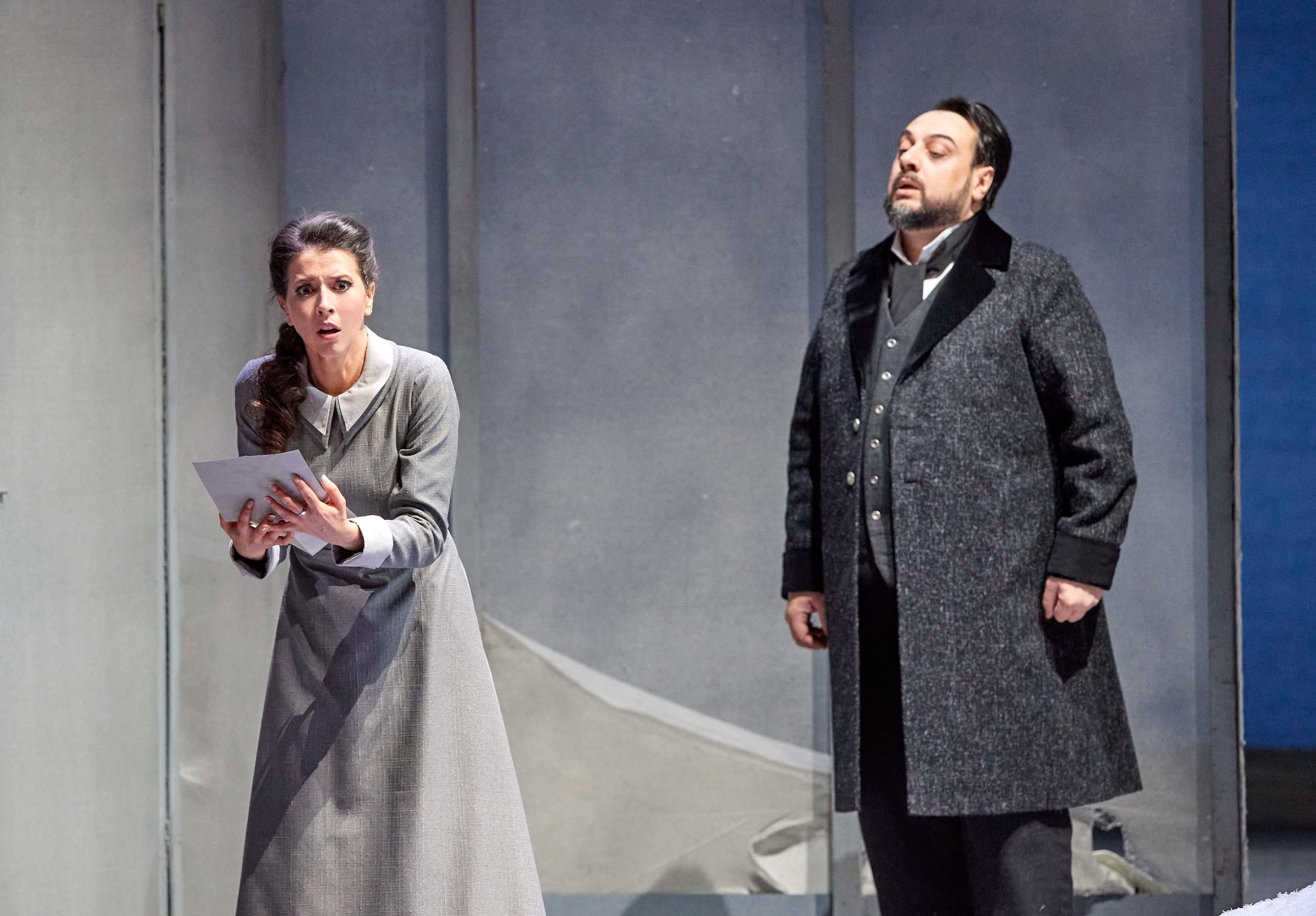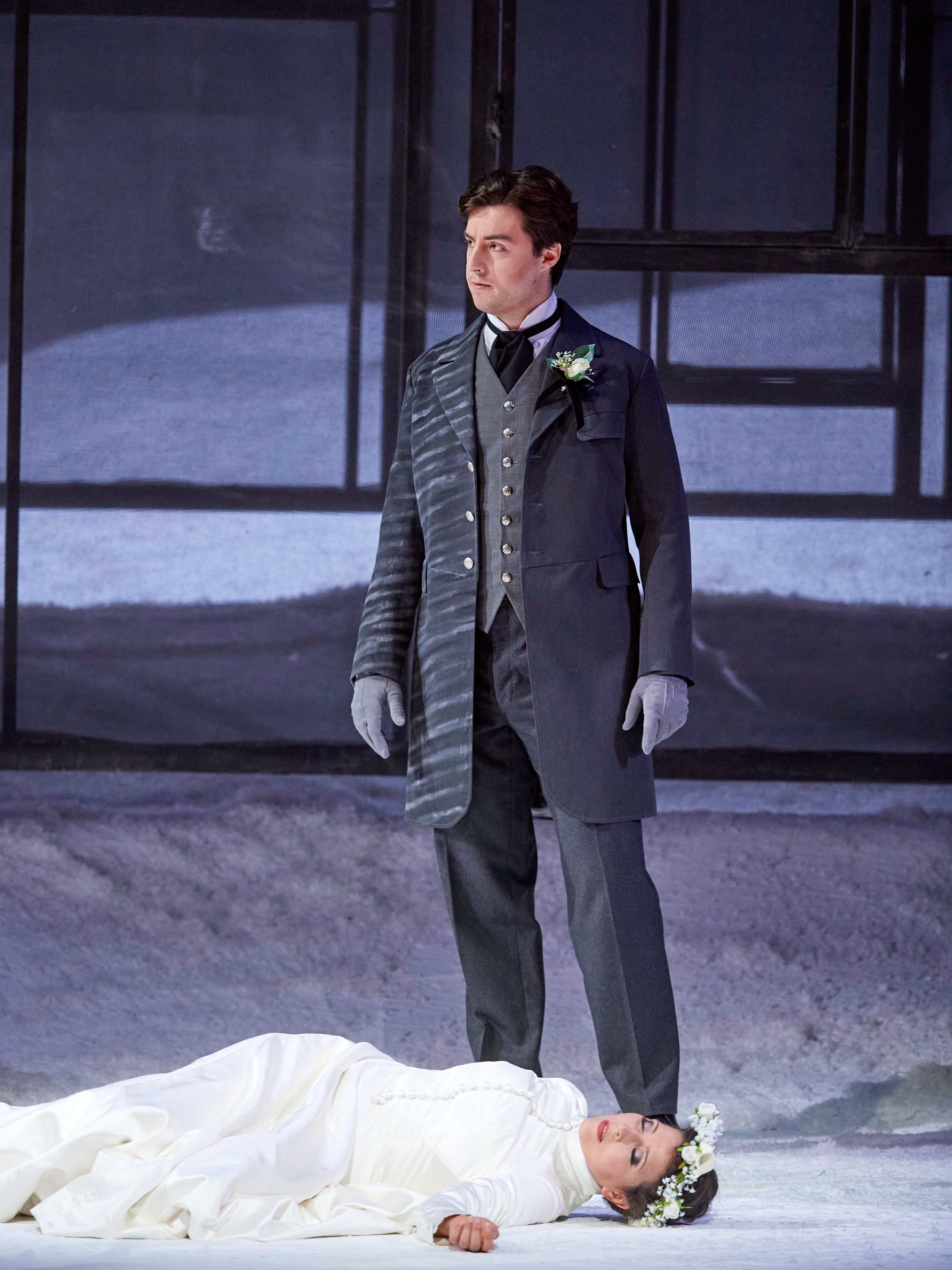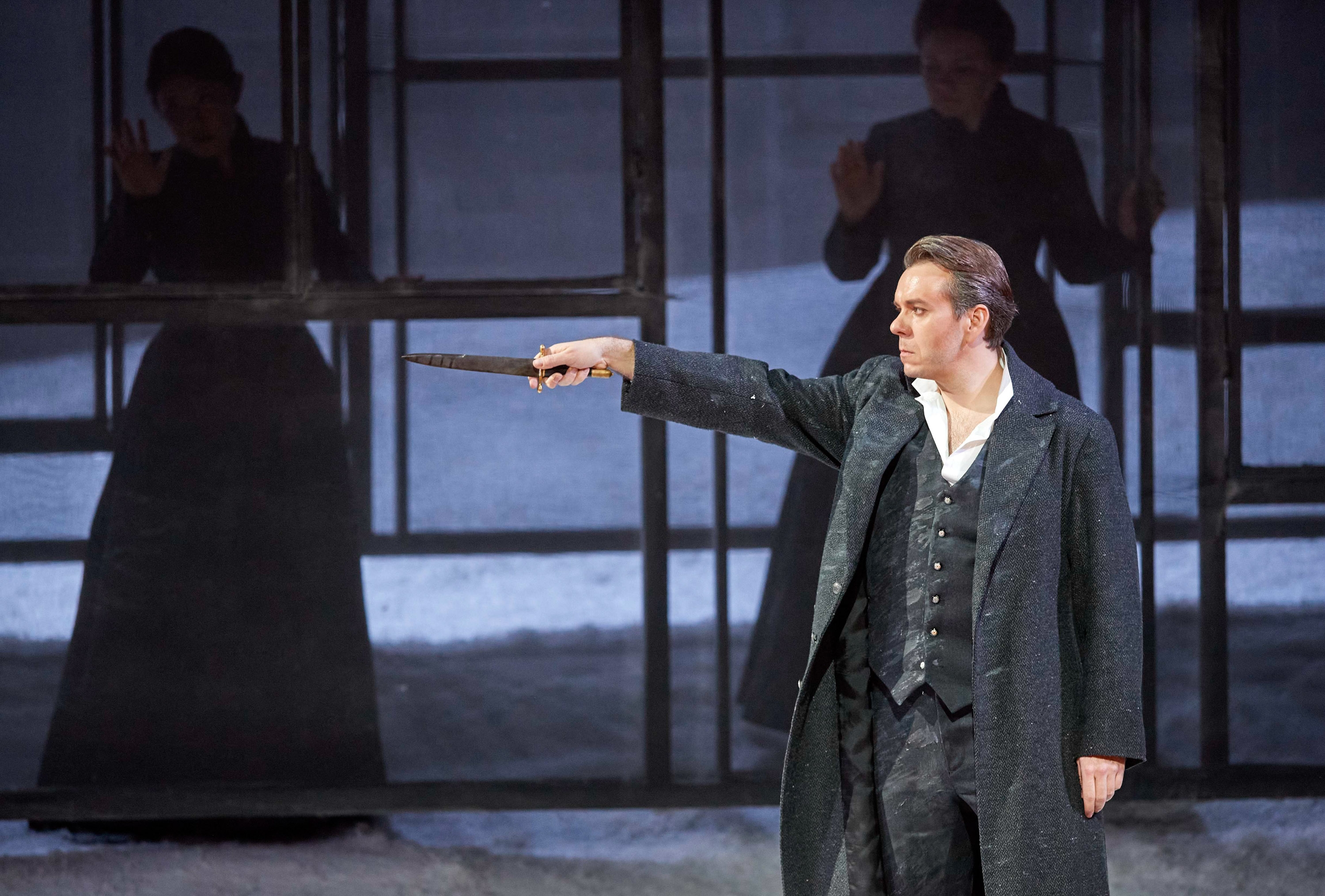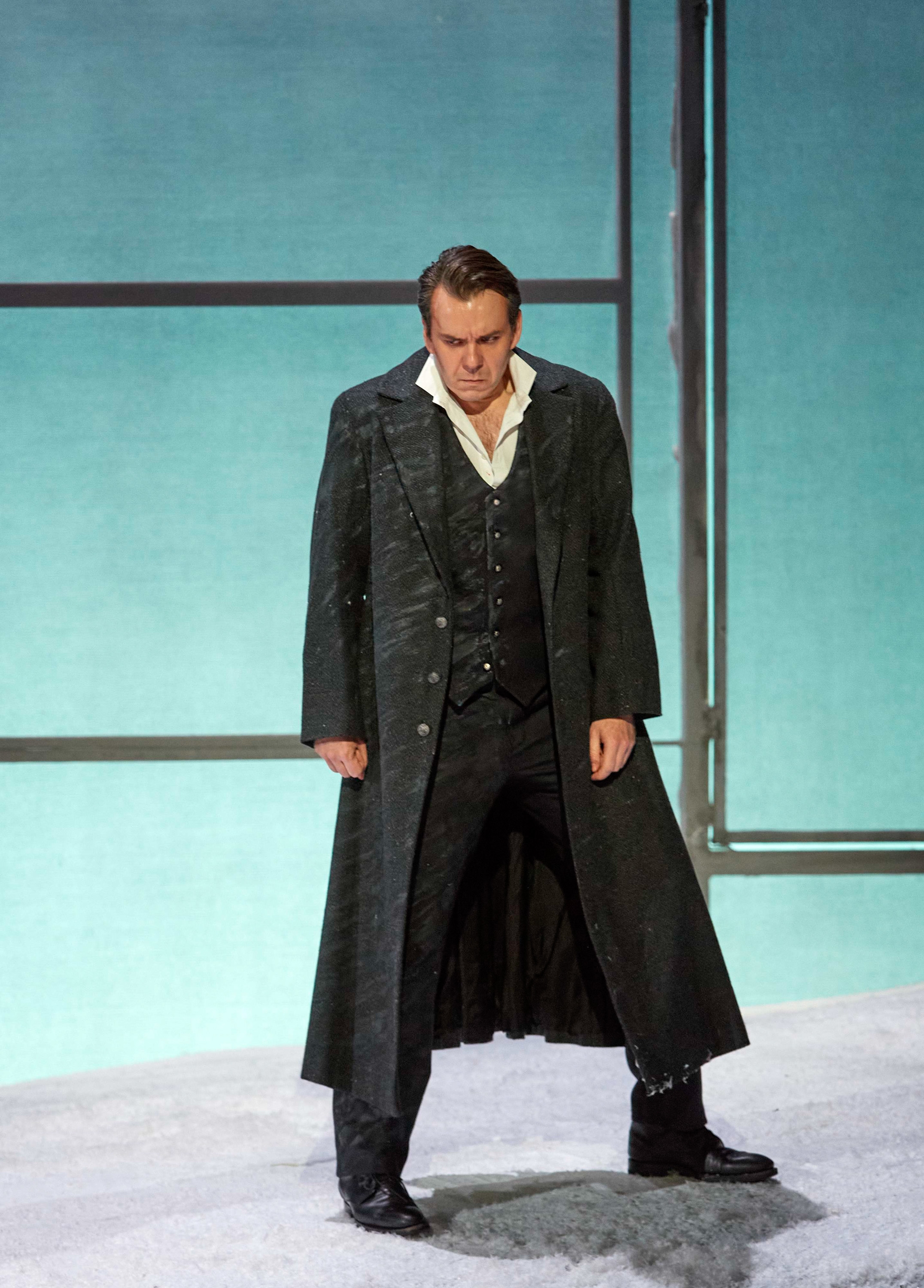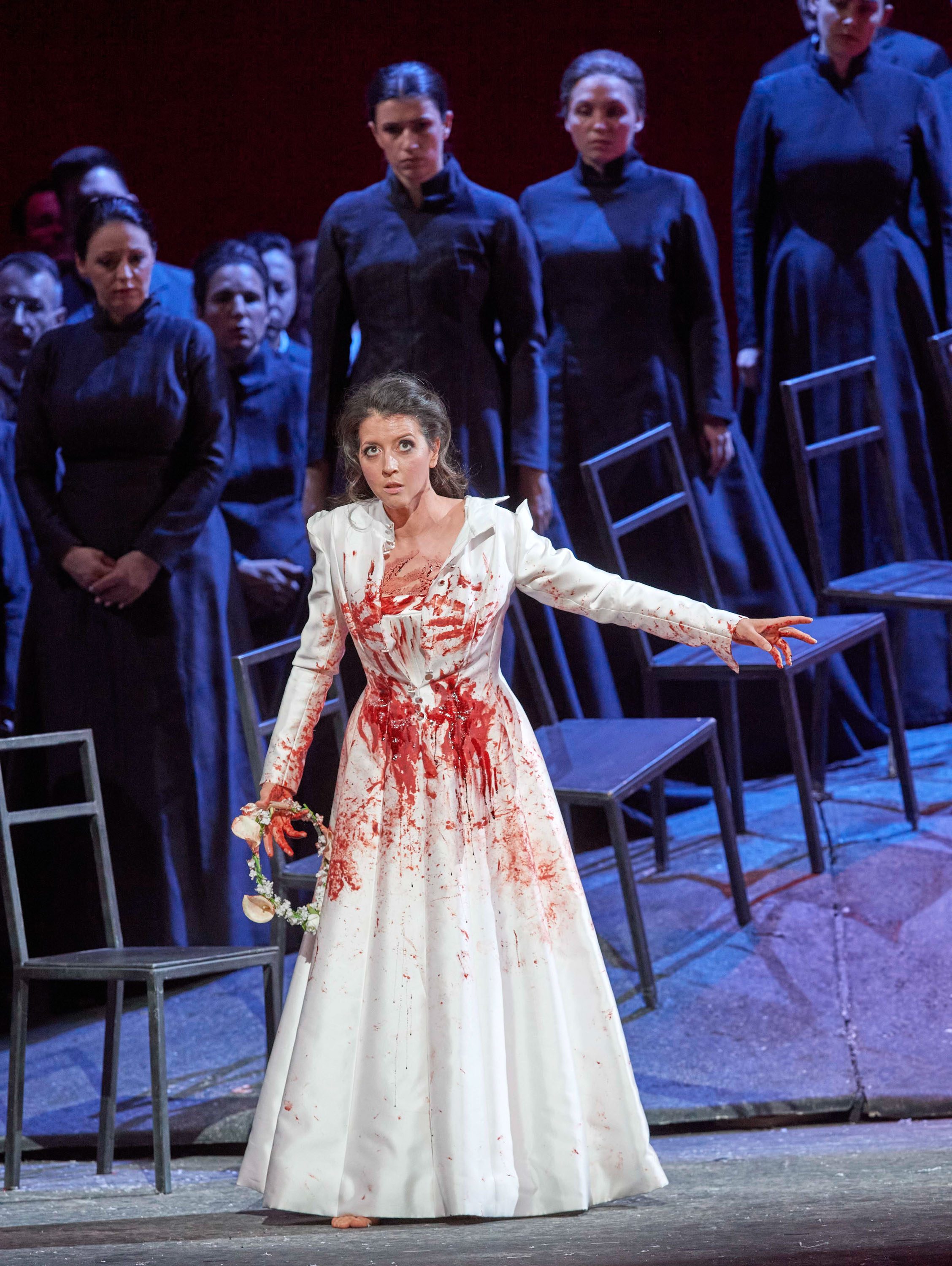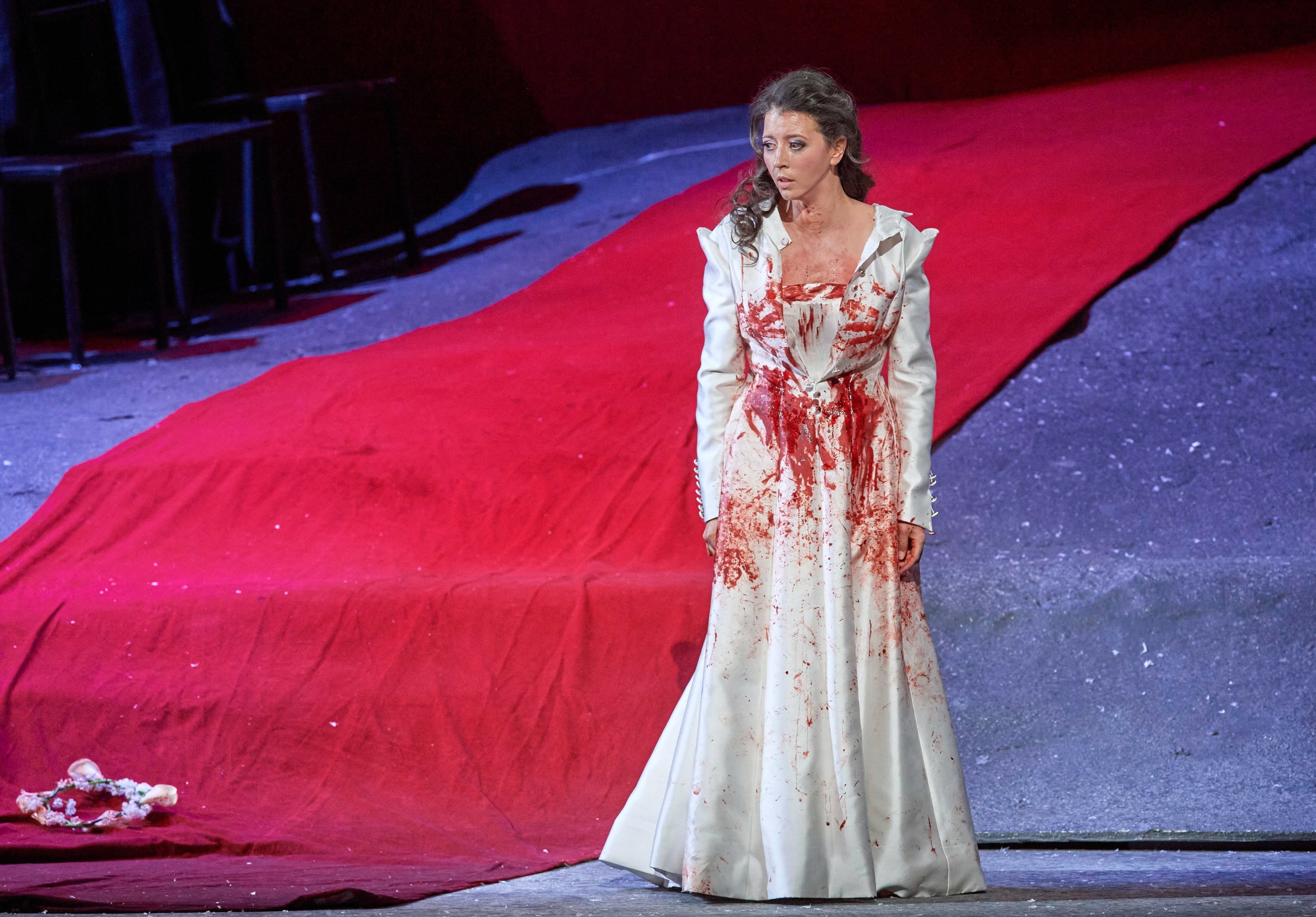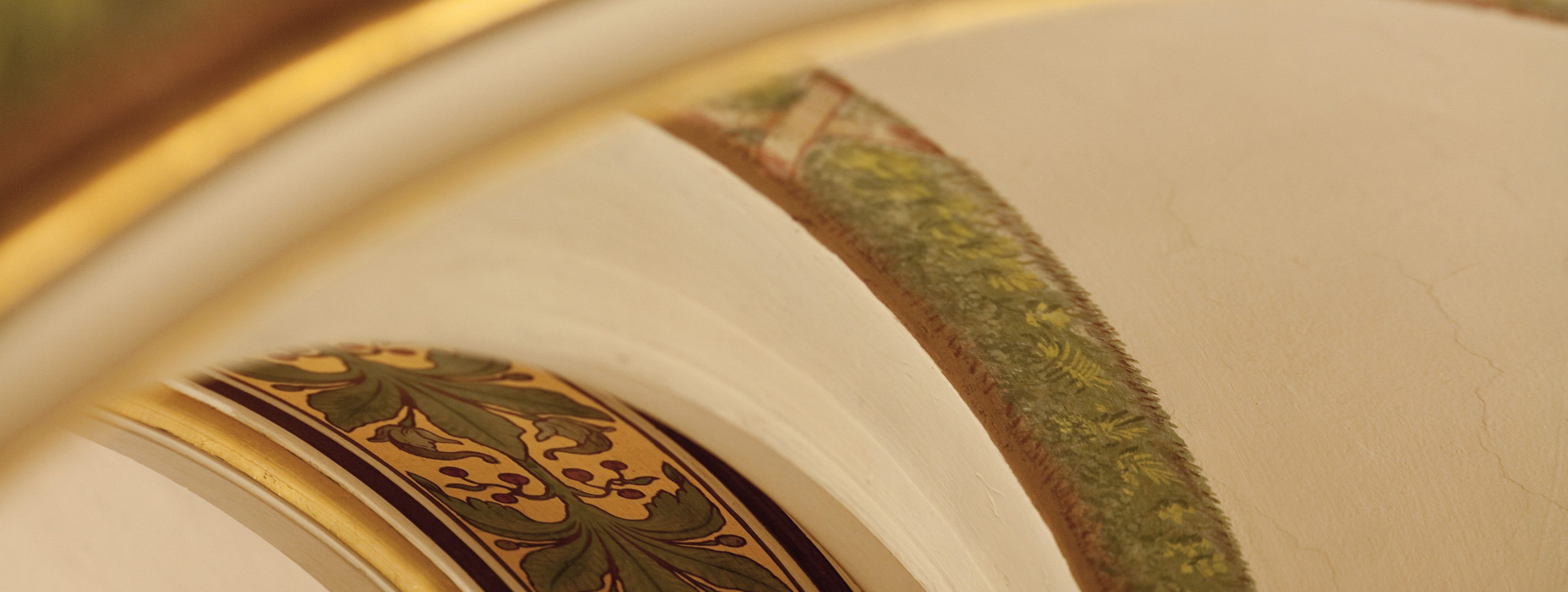About the Production
As he wants to secure his political position, Lord Enrico wants to marry his sister Lucia to the influential Lord Arturo. But Lucia is madly in love with Enrico's mortal enemy - Sir Edgardo, who falls in love with her again.
Enrico then takes advantage of Edgardo's prolonged absence to successfully undermine the marriage he has rejected and make Lucia agree to accept Arturo, whom she does not want. When Edgardo unexpectedly bursts into the middle of Lucia and Arturo's wedding celebrations and accuses Lucia of infidelity, she finally breaks down inside: In a fit of madness, she kills Arturo on their wedding night and dies herself shortly afterwards. When Edgardo learns of her death, he stabs himself.
Lucia di
Lammermoor
Storyline
Lord Enrico Ashton once wrested power from the Ravenswood family and killed the head of the family - Edgardo's father.
After a change of throne, however, Enrico suddenly belongs to the politically persecuted side and has to fear for his life. In order to save himself, he plans to marry his sister Lucia, whom he has always shielded from the outside world, to the influential Lord Arturo Bucklaw.
When he informs his immediate circle of this plan, Raimondo, Lucia's tutor, points out how much Lucia is still mourning her recently deceased mother and is therefore not even able to think about a wedding. To his great horror, Enrico then learns from his captain Normanno that, despite her loss, Lucia is now madly in love with a stranger who had heroically protected her from a sudden attack by a wild bull and that this stranger is apparently none other than Enrico's mortal enemy Edgardo.
Enrico is furious and swears bloody revenge. While the mentally unstable Lucia waits for a meeting with Edgardo, she tells her guardian Alisa about a frightening vision in which Lucia believes she has seen the ghost of the woman who was murdered by a Ravenswood in a jealous fit and then thrown down a well. But her love for Edgardo and the prospect of his imminent arrival soon lift her spirits. Shortly afterwards, however, Edgardo only rushes over to say goodbye to Lucia before a long journey to France. Lucia fearfully rejects his plan to attempt a reconciliation with Enrico beforehand - their love should remain a secret. To say goodbye, the two quickly exchange rings as a sign of their oath of love.
During Edgardo's long absence, all his letters to Lucia are intercepted by Enrico and Normanno and replaced with a forged one: Lucia is to be convinced of Edgardo's infidelity and made compliant for her marriage to Arturo. As Lucia wants to remain faithful to Edgardo despite everything, Enrico makes it clear to his sister that her refusal to marry Arturo would mean the downfall of her family. When Raimondo finally reminds her of her dead mother's peace of mind, Lucia desperately agrees, but at the same time longs for death.
During the wedding celebrations with Arturo, Lucia, whose senses are now limited, is forced to sign the marriage contract. No sooner has this happened than Edgardo unexpectedly enters the room to demand his rights to Lucia. However, when he learns that the young woman has already notarized the marriage to Arturo with her signature, the desperate man returns the ring to Lucia and flees to his estate in Wolferag. A thunderstorm approaches.
Enrico leaves the wedding in a rage and seeks out his rival in the middle of the night in his tower in Wolferag - driven by hatred, a desire for revenge and jealousy, the two agree to a duel at dawn by the Ravenswood graves.
Meanwhile, Lucia has stabbed Arturo to death in the bridal chamber in a fit of madness. In complete mental confusion, she enters the ballroom, which is still full of guests, where in a vision she first imagines herself at her wedding to Edgardo and then implores her lover, who is not present, to forgive her and mourn at her grave.
Seeing his sister's madness, the returned Enrico now realizes his guilt far too late. At the Ravenswood graves, Edgardo waits for the duel with Enrico. He learns from some passers-by that Lucia has lost her mind, is dying and is wailing for him.
Edgardo immediately sets off to see his beloved one last time, but Raimondo approaches him and confirms her death, which had already been announced by the tolling of the death knell. In the hope of at least being connected with Lucia in the afterlife, Edgardo stabs himself to death.
Jean Epstein's film adaptation of Edgar Allan Poe's The Fall of the House of Usher served as a source of inspiration for the current production: on the one hand, director Laurent Pelly adopted the oscillation between the real world and a mystical world shrouded in fog captured there and, on the other, the black and white or shades of gray to show the dark mood of Lucia's world. The only contrast Pelly used in the madness scene was the color red as a symbol of spilled blood. In contrast to what is usually the case, the production also shows Lucia's mental abnormality as a genetic inheritance that she shares with her brother Enrico. So it is not just her who has gone mad in this production, but apparently her entire family.
Lucia di Lammermoor is considered a key work of Italian Romantic opera, in which, unlike the corresponding German and French examples written at the same time, the supernatural events are shifted into the inner world of the human being. The ghostly haunting mutates into mental illness, the traumatic experiences intensify into psychosis. And so, in Lucia di Lammermoor, it is no coincidence that the title character's mad aria, which is both incredibly challenging and effective for the singer, is at the center of the opera's musical dramaturgy. The work also thrives on melodic richness, a musical-psychological development of the characters and atmospheric mood painting. At the same time, Donizetti and his librettist Cammarano skillfully softened the prescribed formal scheme of bel canto opera and even anticipated the gestural scenic language of Giuseppe Verdi.
Gaetano Donizetti and librettist Salvadore Cammarano created the three-act Lucia di Lammermoor in their first collaboration within just a few weeks as the culmination of an entire series of settings of Sir Walter Scott's novel The Bride of Lammermoor . As the Teatro San Carlo in Naples, which was scheduled to stage the premiere, had suffered a financial disaster, the premiere date was delayed by several months until the work was launched with great success and began its triumphal march around the world.
At the Vienna State Opera, Lucia di Lammermoor was included in the repertoire shortly after the opening of the opera house in 1870 and here, too, it became a showpiece for the great prima donnas. For example, the only appearances of the legendary Maria Callas at the Vienna State Opera are linked to this work - she sang the title role in a guest performance by La Scala Milan at the Haus am Ring in 1956. And Edita Gruberova also wrote Viennese (and therefore international) performance history as Lucia from 1978.


